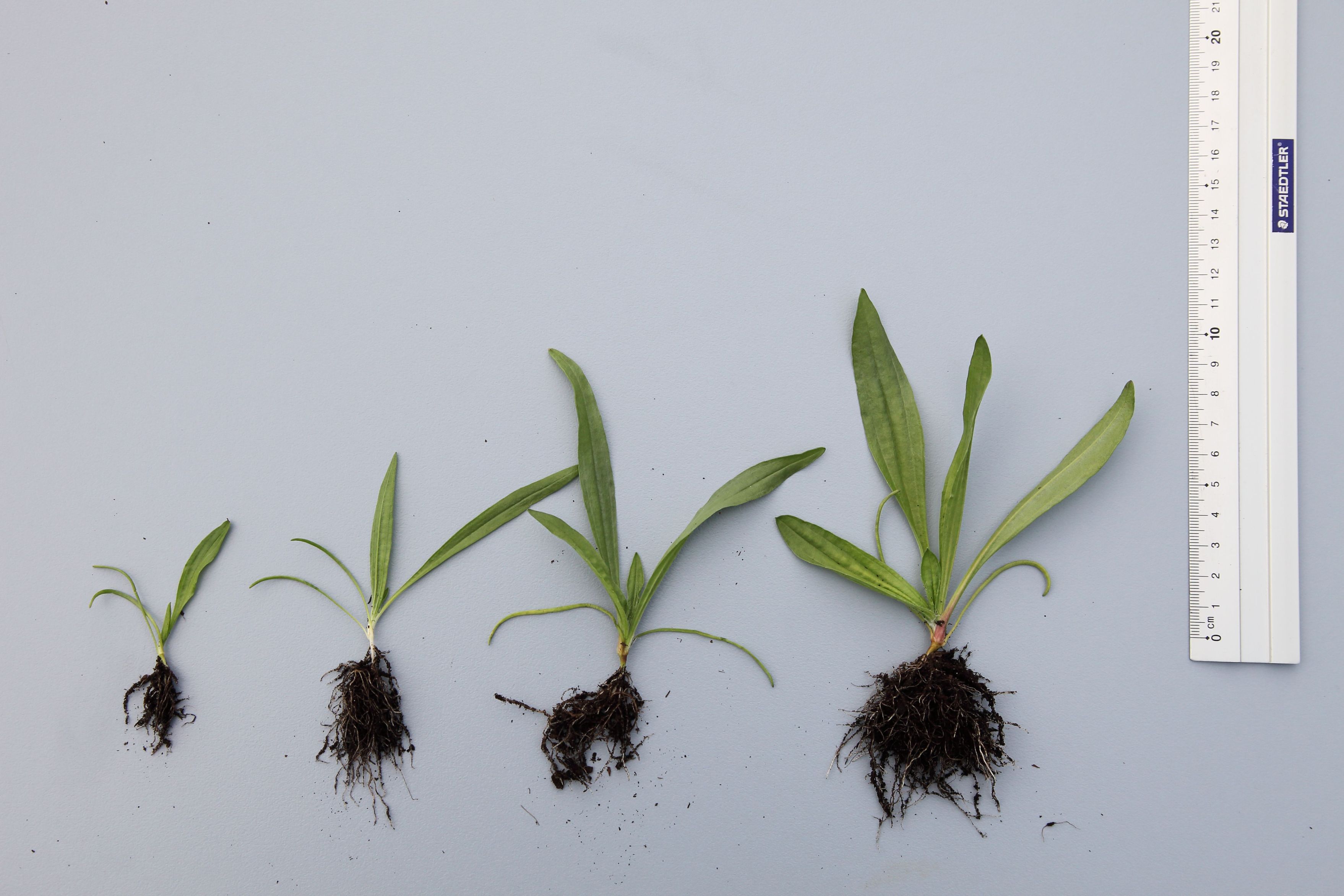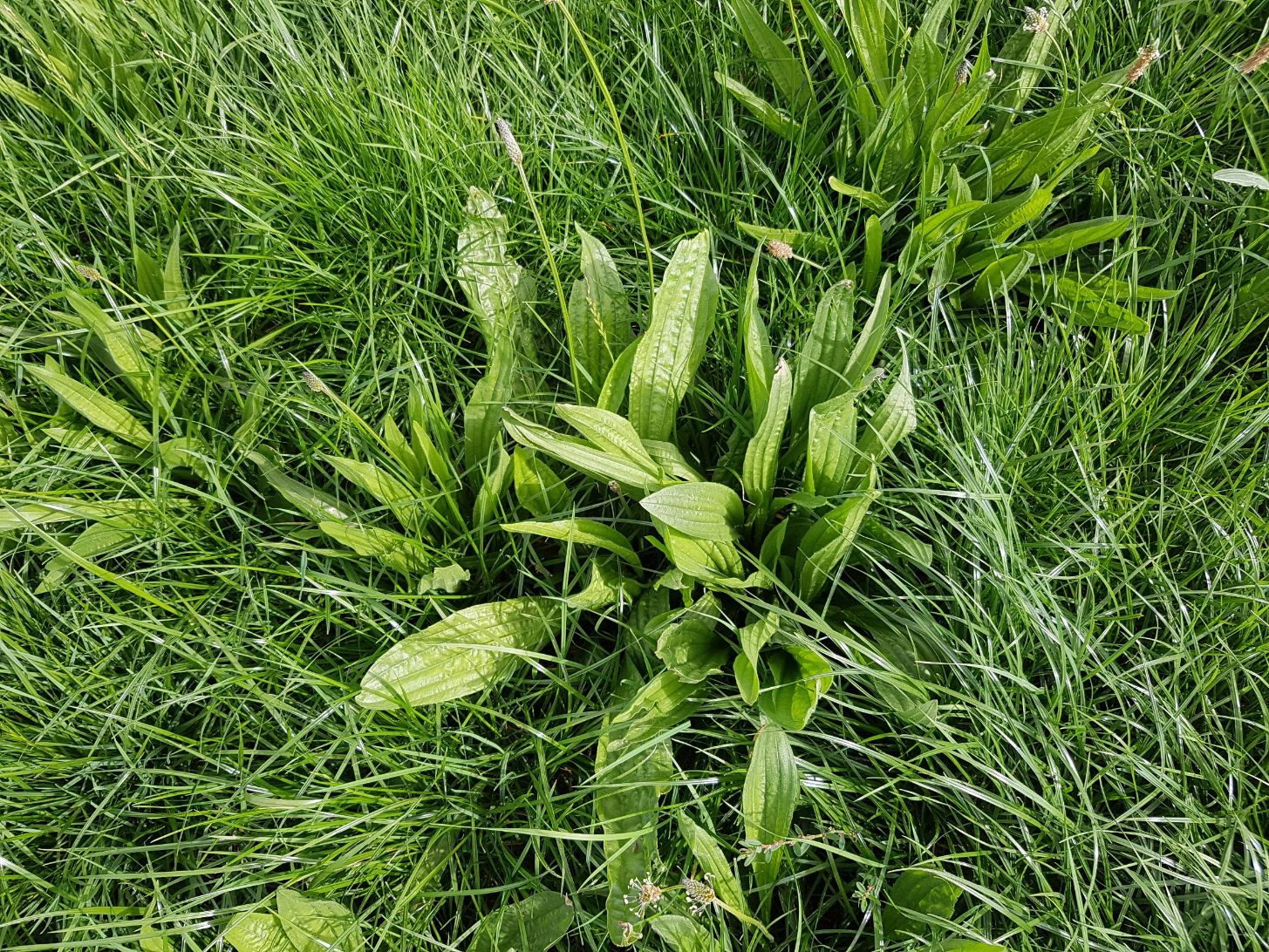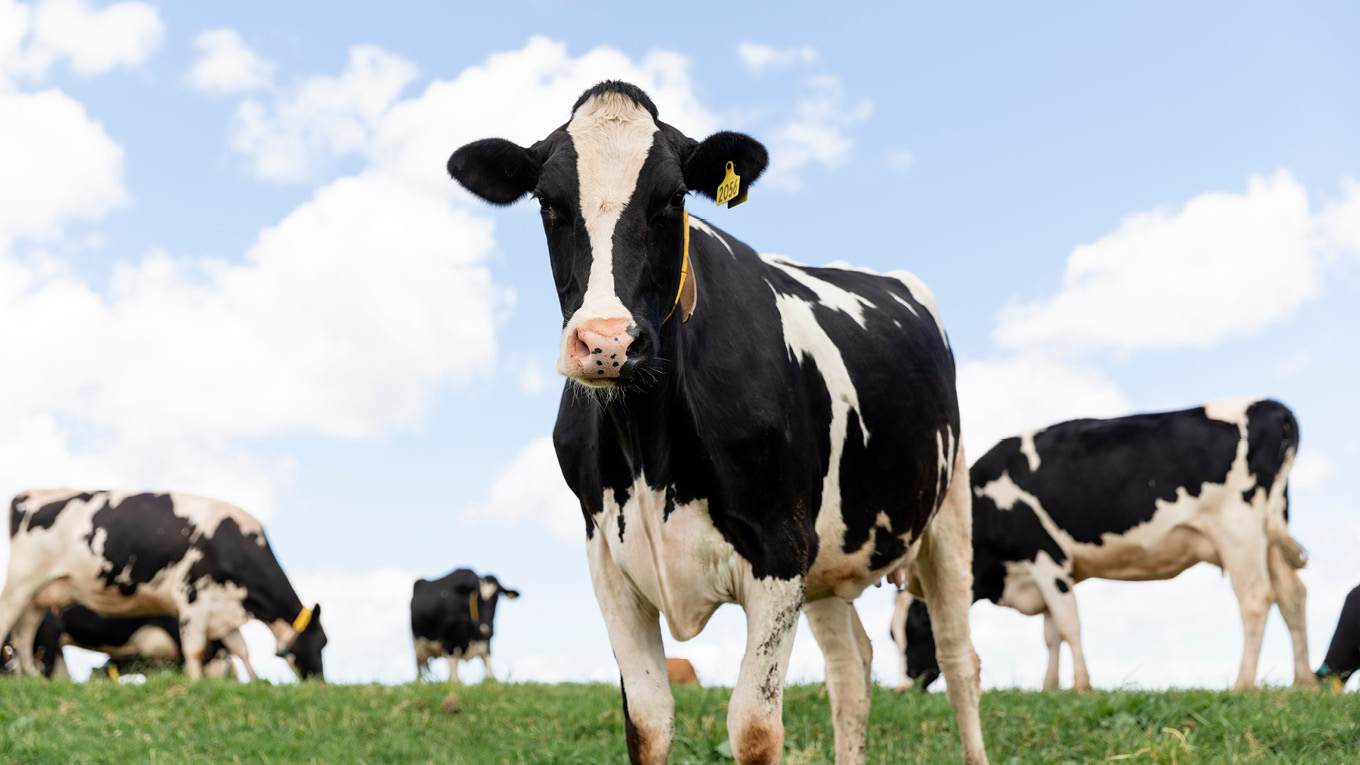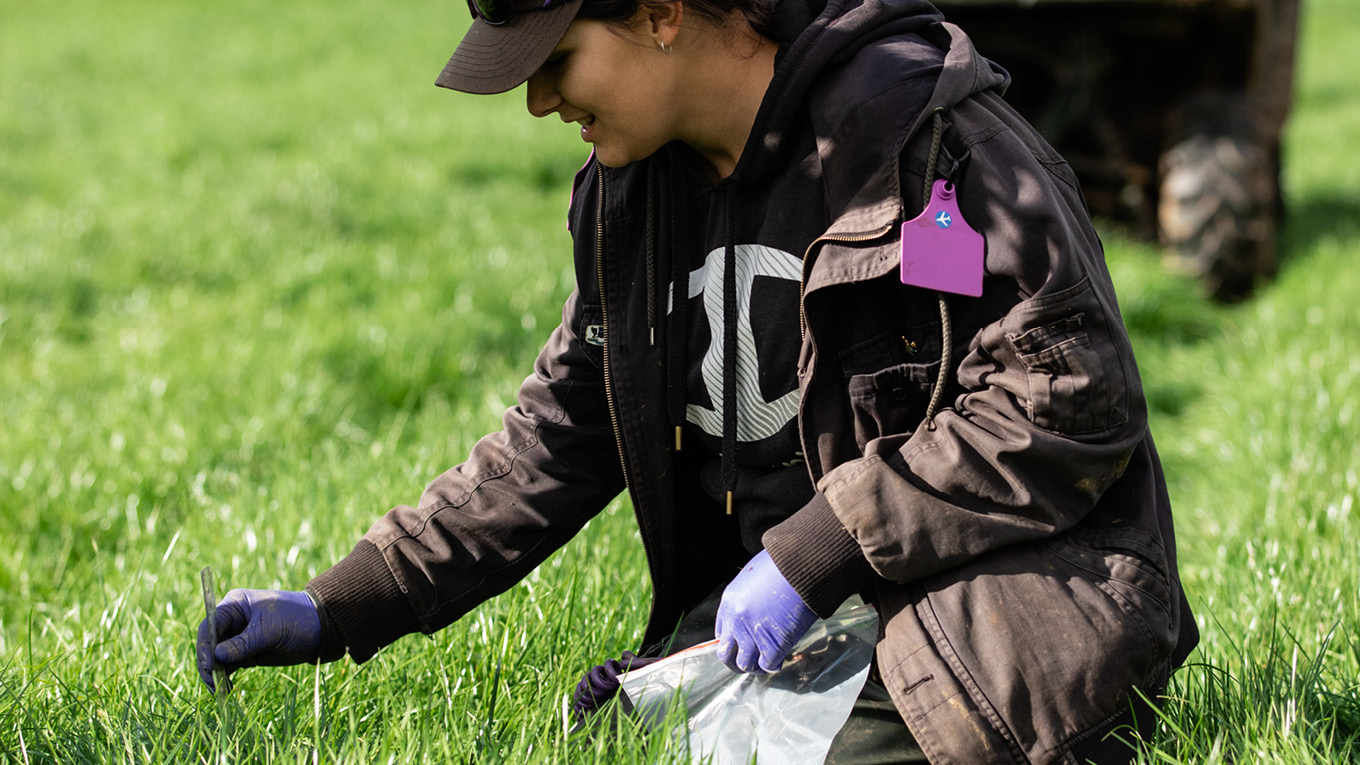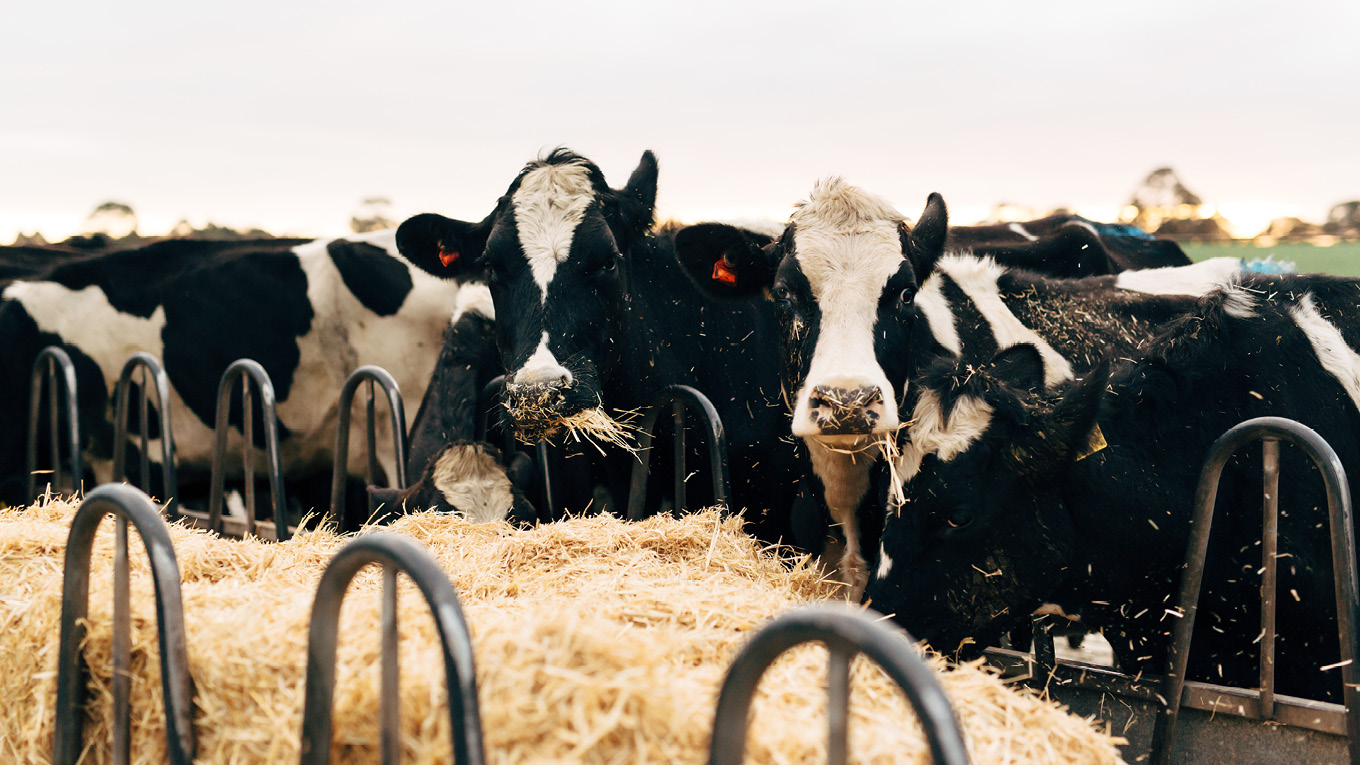Plantain
Plantain is a mineral-rich temperate perennial herb with a low fibre content that is suited to regions with >600 mm of annual rainfall. Nutritive value advantages from including plantain in perennial ryegrass-based pastures have increased spring and summer milk yields. Research at the Tasmanian Institute of Agriculture showed that the profitability of perennial ryegrass-based dairy farms can be improved by sowing as little as 25% of the farm area to a perennial ryegrass, white clover and plantain mixture. Other advantages of plantain include its tolerance of a wide soil pHCa range (4.2-7.8), low soil fertility and concurrent heat and drought stress.
Agronomy and management
A pre-sowing weed management program is essential because plantain is sensitive to commonly used phenoxy-based herbicides (2,4-D and MCPA) for controlling broad leaf weeds in pastures and there are currently no registered herbicides for use with plantain in pastures. Plantain is typically autumn sown, but can be spring sown if irrigation is available. Seed should be sown at a 10 mm depth, with a sowing rate of 2-5 kg/ha recommended when plantain is included in seed mixtures with perennial grasses. After sowing, careful monitoring of slug and snail damage is essential, with the application of bait at sowing strongly recommended.
When managed as part of a perennial ryegrass grazing rotation, plantain typically only persists for 3-4 years. Plantain can be successfully oversown into existing perennial ryegrass-based pastures using either broadcasting or direct-drilling, although direct-drilling is more effective. To maximise germination success, oversowing should occur soon after grazing and be followed by rolling.
Rotational grazing should be practiced. Plantain monocultures are ready to graze when plants have 6-7 fully developed leaves. When plantain is sown in mixtures with perennial ryegrass, grazing often needs to occur before plantain plants have 6-7 leaves to minimise their likelihood of being out-shaded. When plantain is grazed at intervals appropriate for perennial ryegrass (i.e. when perennial ryegrass plants have 2.5-3 leaves/tiller) it may benefit from an autumn rest period that allows plantain plants to achieve 6-7 leaves before the onset of winter. Grazing management should aim to minimise pugging and trampling damage. This is especially important during establishment, when trampling damage can be minimised by grazing with lighter stock (e.g. heifers or calves) or lax grazing (i.e. leaving higher post-grazing residuals).
Despite being adapted to low nutrient environments, plantain is responsive to improvements in soil fertility with a similar nitrogen growth response to perennial ryegrass.
Yield
Plantain can achieve similar yields to perennial ryegrass, being capable under irrigation of annual yields exceeding 25 t/ha. In temperate dairying regions, benefits of replacing perennial ryegrass monocultures with perennial ryegrass, white clover and plantain mixtures are not limited to yield improvements, but a reduction in the seasonality of year-round growth. A controlled study in north-west Tasmania found that replacing perennial ryegrass monocultures with this mixture increased yield over 2 years by 12% or 2800 kg/ha.
Animal performance
Including plantain in perennial ryegrass-based pastures has been shown to increase the spring and summer milk yield of spring-calving dairy cows. Benefits of including plantain in perennial ryegrass-based pastures are more evident at lower pasture allocations (i.e. when pasture is allocated at 20 kg/cow per day or less) which highlight the nutritive value advantages of plantain. Daily milk yield of cows allocated 18 kg of pasture/day was 1.3 kg higher for cows grazing a perennial ryegrass, white clover and plantain mixture than those grazing perennial ryegrass only. Work at the Tasmanian Institute of Agriculture has highlighted the potential role of plantain monocultures as a pre-calving feed to reduce the incidence of milk fever.
